This offseason, we’ll be breaking down the performance of each unit – passing and rushing offense and defense – with a look ahead to 2022 and what this means for the Irish. As we move to the defense, Notre Dame struggled with big rushes allowed more last fall than any year of the Clark Lea era. As injuries ravaged what was projected to be a deep linebacker group, Marcus Freeman’s unit struggled with consistency early in the season and later in the year against rushing quarterbacks. After the season ended on a sour note with Oklahoma State getting loose in the second half of the Fiesta Bowl, can the ND run defense return to form in 2022?
Previous entries:
Consistency struggles undermine a recent strength
The 2017-2020 Notre Dame run defense was impossibly consistent. There were stylistic differences, sure, with havoc and explosiveness fluctuating year to year. But the formula always added up to a stout rushing defense, with only a handful of shaky games over four seasons. Even many of those performances felt more like Clark Lea choosing to let offenses like 2019 USC run while limiting their strength through the air.

But 2021 was a slight step backward. The season began with unfamiliar performances – long stretches of defensive dominance on the ground against FSU and Toledo punctured by explosive runs. This was also a passing defense issue, and felt like part of Marcus Freeman’s adjustment period – adapting to personnel and figuring out how high he could dial up the defensive aggression without suffering costly breakdowns on the back end. The defensive havoc rates quieted entering the meat of the schedule, but with it, the explosive plays vanished. Still, issues cropped up – struggles to contain mobile quarterbacks at Virginia Tech, and getting gashed for explosive runs against UNC.
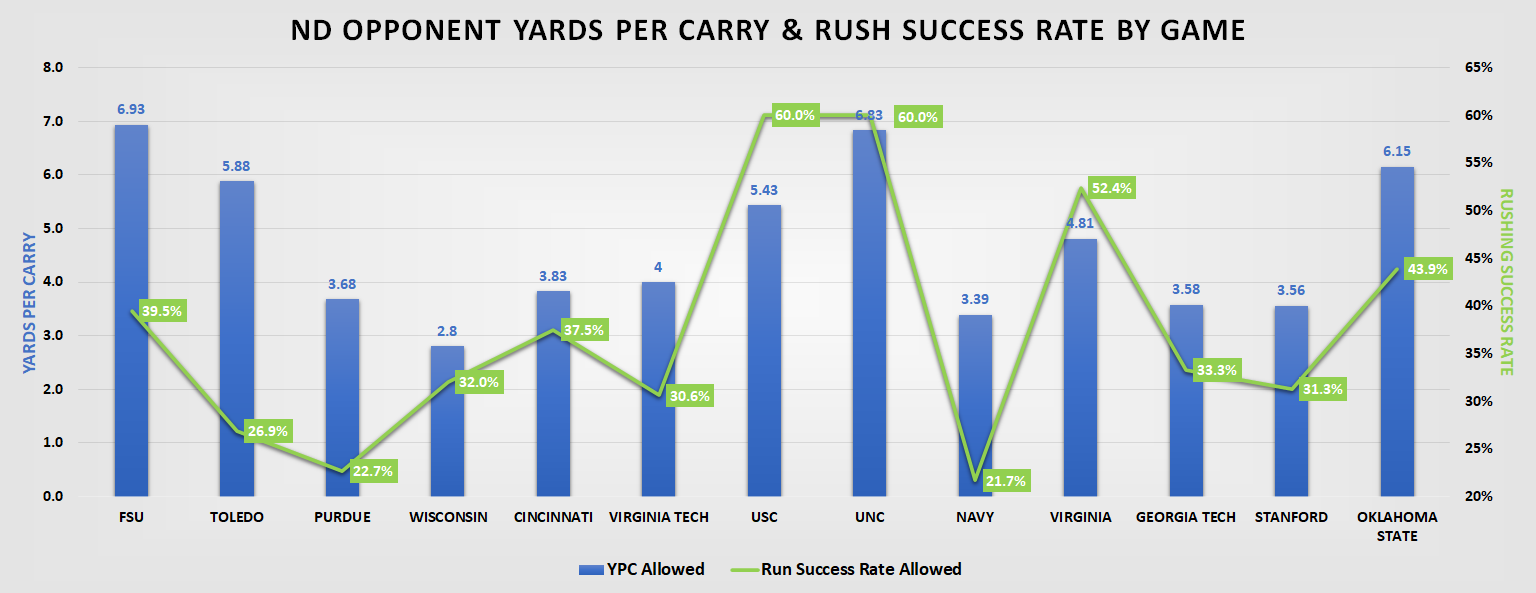
Traditional, straight-ahead rushing attacks like Purdue, Wisconsin, Georgia Tech, and Stanford barely stood a chance against the Irish defense front. But the struggles and consistency issues were real, especially against mobile quarterbacks like Sam Howell and Spencer Sanders. Under Al Golden, Notre Dame will need to be better defending these dual-threat quarterbacks, especially those that are a part of dangerous offenses like Caleb Williams and BYU’s Jaren Hall.
An explosive run avalanche
The explosive runs allowed were really the glaring issue with the Irish run defense – the only opponent to really grind out consistent yards on Notre Dame was USC. And that output, with credit to Keontay Ingram, seemed more about Marcus Freeman trying to dictate what USC could and couldn’t do, with a strong focus on slowing down Drake London and the passing game.
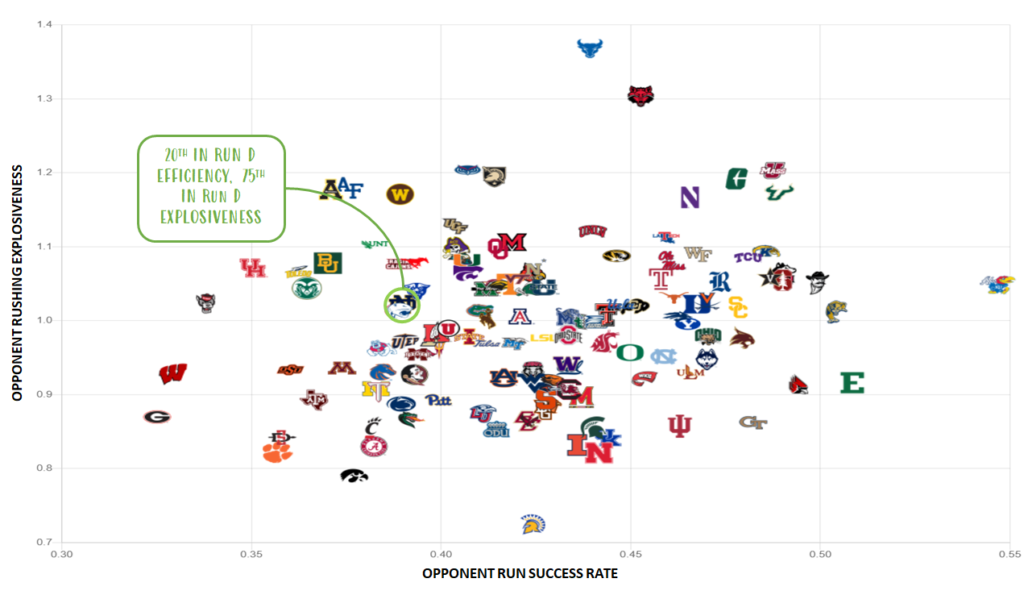
Notre Dame allowed four runs of 50+ yards in 2021, which was the same as the combined total of 50+ yard rushes allowed from 2018-2020. Chalk it up to randomness (explosiveness, and especially length of long plays tends to be fairly random over the long run), bad early tackling, the Freeman adjustment – whatever the reason, these long runs were painful and dragged down Notre Dame’s season-long statistics.
The defensive line rushing stat profile reflects this, with much poorer national rankings that you’d expect:
- Average Line Yards Allowed: 63rd
- Opportunity Rate: 42nd
- Power Success Rate: 95th
- Stuff Rate: 39th
That tells the story of a rushing defense that was very good when directly challenged, but too easily caught napping or fooled with complexity. The rushing defense was often good, but not great, which meant that over-aggression resulted in the occasional big play. The challenge moving into this fall will be to reach a level where the havoc and run-stuffing can exist while limiting the occasional back-breaking long runs.
The run stuffing should return in 2022
While significant leadership departs with Drew White, Kurt Hinish, and Myron Tagavailoa-Amosa moving on, the front seven of the defense remain loaded looking ahead to the fall. The defensive line is a beautiful combination of talent, experience, and depth. Harvard grad transfer Chris Smith sealed up one of the few roster holes with another big body to clog the middle. Jayson Ademilola and Rylie Mills are primed for monster seasons, and Howard Cross and Jacob Lacey are popular breakout candidates.
Linebacker projects to stabilize significantly after the injury bug zapped solid depth in 2021. Bauer and Bertrand will provide a high floor, and Marist Liufau’s havoc potential increases the unit’s ceiling. Jack Kiser steps into more of a leadership role this season, and might be pushed by a couple of top-100 talents in Jordan Botelho and Prince Kollie. There’s also one of the best linebacking classes in recent history arriving, with guys like Junior Tuihalamaka that could force their way onto the field.
While half a season of Kyle Hamilton in the running game will be missed, especially if that’s Brandon Joseph’s potential weakness, there’s other ways the secondary can indirectly chip in. If the overall improvement of corner and safety allows greater confidence and aggression against the run, Notre Dame’s stuff rate and disruption could creep back up to near the best in the nation.
It will be a disappointment if this isn’t a top-20 unit. All the ingredients are there for something even better, and the Irish will need that level of play with the offensive firepower on the schedule. Ohio State is the heavy favorite for the best offense in the country, USC has imported an all-star team of skill position players and the pre-eminent play-caller in the college game, and BYU is projected 13th in Offensive SP+. Clemson struggled mightily but started to turn the corner running the ball with former ND recruiting target Will Shipley emerging, and one of their blue chip QBs seems likely to figure it out by November.
For the Irish to be successful in those four toughest games on the schedule, they’ll need Al Golden’s unit to win consistently against opposing offensive lines. Against a team like the Buckeyes, can the Irish hold up against the run when required to devote a lot of focus on passing defense? Can the Notre Dame defense bounce back limiting opposing QB scrambles when things break down? Can the front seven force passing downs consistently against the middle tier of opponent offenses like UNC or Boston College? Most 2022 opponents will be overwhelmed up front, but the performance against the top 4-5 teams will be critical.

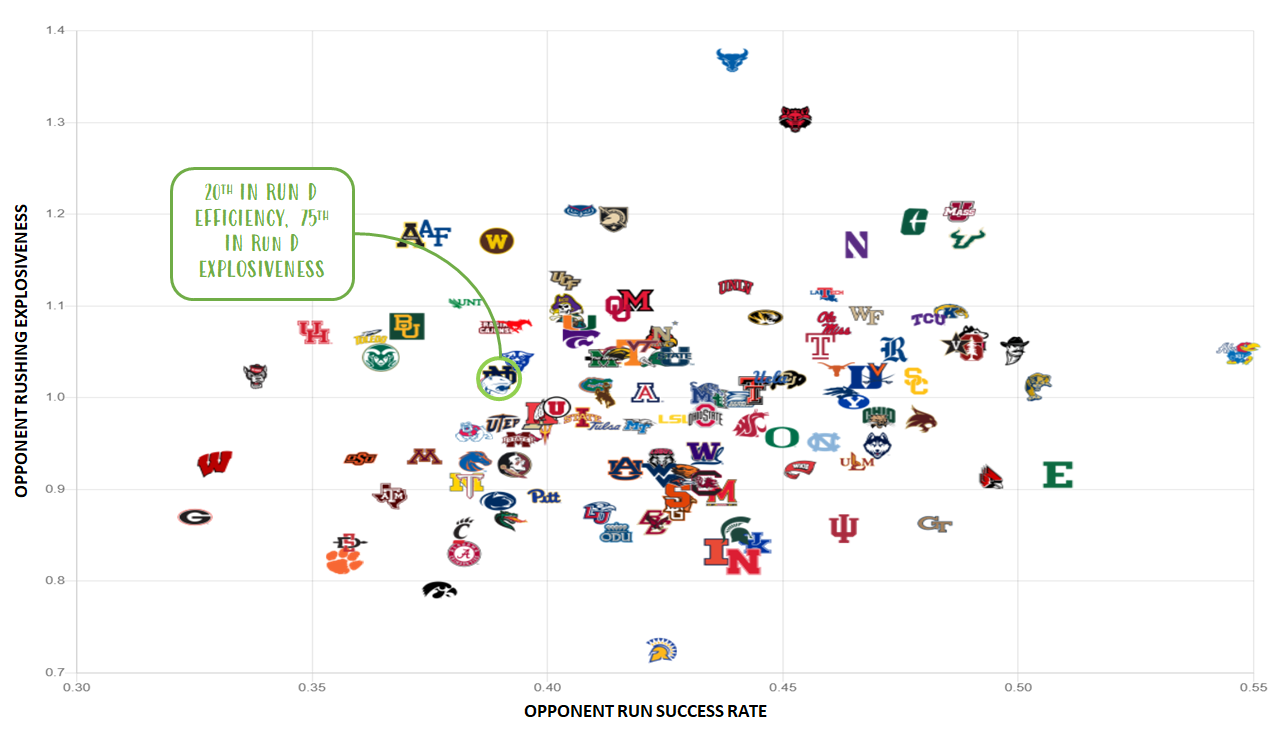
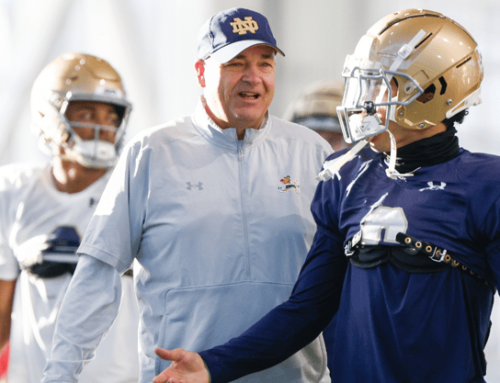
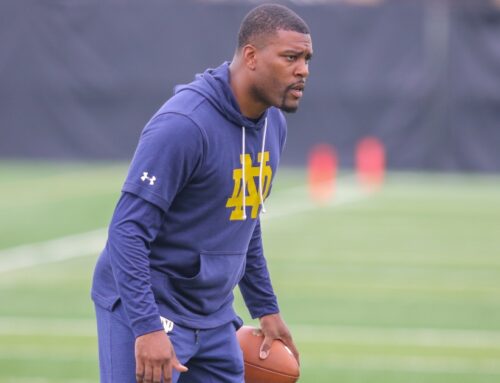
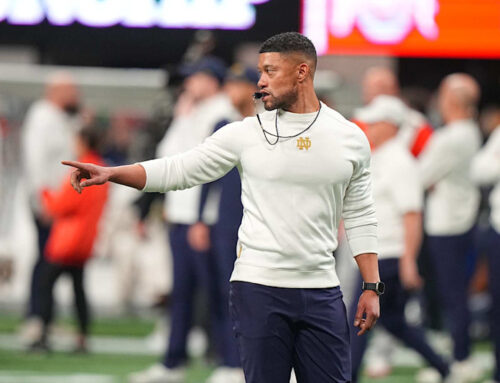
Hopefully much of the 2021 problem was simply due to guys playing out of position due to injuries. I do think the coaching staff also occasionally put guys in poor position for no good reason (Foskey playing MLB 5+ snaps in some games); hopefully that weirdness stops in 2022. With so many guys appearing to be at full health heading into the fall, Freeman/Golden have a chance to do something special with this defense.
agreed, the second string front seven – something like NaNa, Chris Smith, Howard Cross, Justin Ademilola, Prince Kollie, Bo Bauer, Jordan Botelho / Jaylen Sneed – is probably competitive with some recent first string units. The ceiling and the floor should both be extremely high, assuming the schematic stuff is more consistent than not.
Really really interested to see how much they rotate that group through. A lot of guys there with huge upside but lacking major game experience. Should be fun to see them develop (although they might not see a ton of snaps week 1).
That Navy success rate!